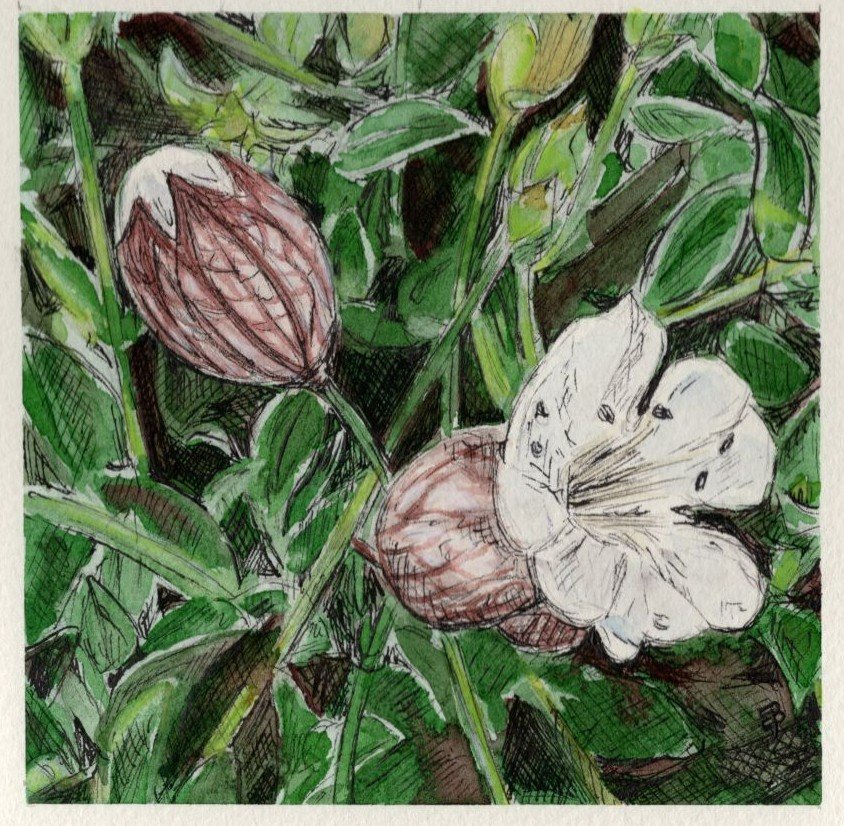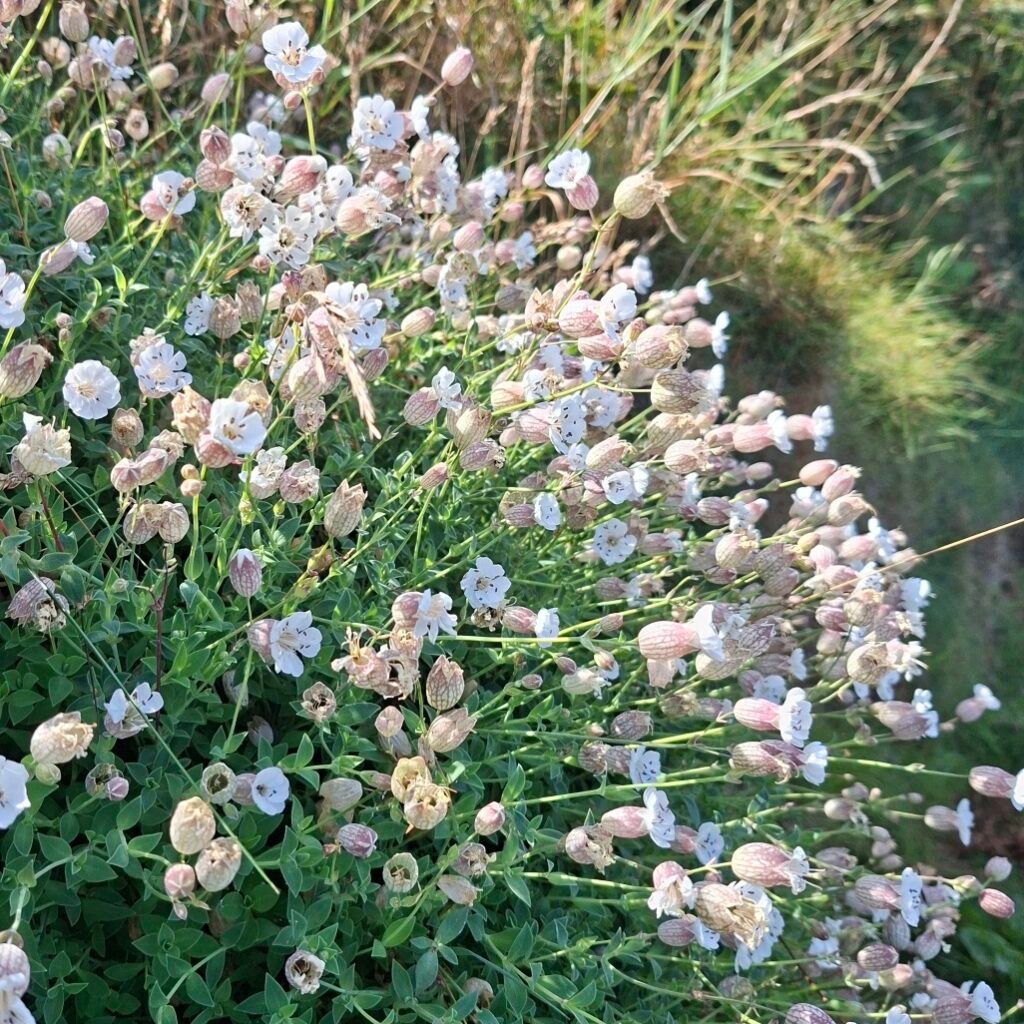Growing up in Cornwall, sea campion is one of those plants that’s like an old friend. I’m happy every time I see the white petals and puffy, delicately pink-veined calyx. I used to sit next to clumps of these as a teenager at my favourite secluded sitting place, just off the North Cornwall coastal path. When I moved to the Isle of Man, over 20 years ago, I was delighted to see that many of my favourite cliff-top plants from Cornwall are also to be found here, including the sea campion. Having recently photographed some on a walk between Maughold Village and Ramsey, I thought I’d find out more about this pretty plant.

Sea campion (Silene uniflora) is a low, mat-forming perennial of the pink family (Caryophyllaceae) that thrives on sea-cliffs, shingle banks and dunes. It is easily recognised by its bladder-like, pink and purple-veined calyx and five white petals that are deeply notched, giving the look of ten. Its leaves are grey-green and somewhat fleshy, adaptations that help it cope with coastal exposure. Flowering mainly through late spring and summer, it often carpets ledges and cliff-tops above the spray zone.
Across Britain and Ireland sea campion is mainly a seaside specialist, only occassionally found inland if the soil is right for it. Beyond our shores it hugs Atlantic and Baltic coasts and has even been introduced to other parts of the world, including Australia!
On the Isle of Man, this plant is a regular companion on coastal walks. Local records list it from Port St Mary, Glen Maye, Bradda Head, Groudle Glen, Niarbyl, Fleshwick, Langness, Maughold and the Calf of Man so you can expect to see it around much of the shoreline.

There’s a lovely description of the plant and its occurrence in the Heysham area on the Northwest Nature and History website, including some lovely photos of the flowers. There’s also an interesting piece about the plant on the Botany in Scotland website. This includes a description of the origin of the Latin name of the plant, which derives from the drunken Greek god of wine, Seilenos, and describes how the swaying movement of the flowers has been found to attract pollinators.
Closer to home, the Manx name of this plant is ‘lus ny brooinyn hraie’, meaning plant of the outer shore. Although hardly romantic, it is more cheerful than the phrase the Cornish sometimes use of ‘dead man’s bells’ due to a belief that if you pick the flowers of this plant you will die soon afterwards. I hadn’t heard this term for the plant when I lived in Cornwall, which I’m glad about as it may have influenced my feelings towards it. I feel ‘fairy pillows’ suits it better and will think of it as this instead!

Leave a Reply